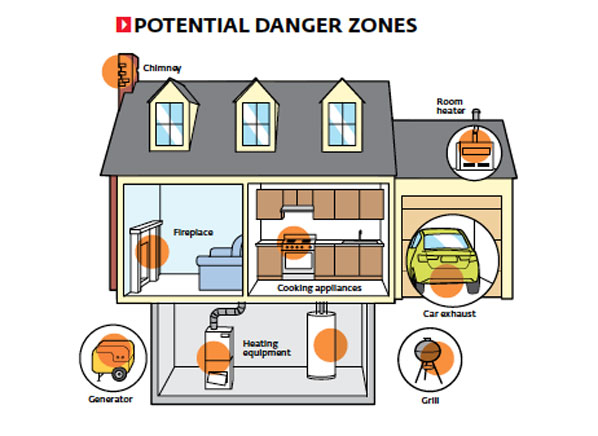Feb 01, 2016
Carbon Monoxide
On January 12, 2016, CroppMetcalfe HVAC technician Paul McElwee visited a home in Maryland. The family scheduled an appointment because their furnace was not producing any heat. Shortly after entering the home, Paul was able to identify the problem: a cracked heat exchanger.

Not only was the furnace not working, but the cracked heat exchanger was leaking carbon monoxide into the home with a dangerous level of 2000 parts per million in the flue. Anything over 100 parts per million in the flue (and 8 parts per million anywhere else in the house) is considered dangerous and is caused to shut down the system and evacuate the house. There were no carbon monoxide detectors in the house.
A young child who was living in the home had been sick for weeks, with doctors unable to identify the source of his nausea and headaches. Once Paul identified the CO problem, he recommended the family take the boy to a hospital to be tested for CO poisoning.
As it turns out, this was the reason for the boy and other family members falling ill. Doctors were able to treat the boy and he has been recovering ever since. CroppMetcalfe installed a new, safe furnace the very next day, complete with carbon monoxide detectors. In this case, the family was thankful there were no long-lasting repercussions of carbon monoxide, but not everyone is so lucky.
Protect Your Family From the Dangers of Carbon Monoxide
Carbon monoxide is a colorless, odorless gas that has been given the name “the silent killer.” The winter season brings terrible stories about families becoming sick and even dying from carbon monoxide poisoning. The main causes of these tend to be:
-
Gas burning appliances that are broken and emit CO into the home
-
Running combusting engine appliances inside the home or another enclosed area like a garage without proper ventilation
-
Air intake pipes and vents becoming clogged from heavy snowfall

Symptoms of carbon monoxide poisoning are:
-
Fatigue and drowsiness
-
Shortness of breath
-
Headache
-
Nausea and dizziness
-
Pain in the chest
If you or family members are experiencing these symptoms, you need to immediately:
CroppMetcalfe recommends any home which has gas appliances have a carbon monoxide detector on every floor.
For questions about carbon monoxide, CO detectors, or any other safety products, please call CroppMetcalfe at 703-698-8855 or contact us online today.